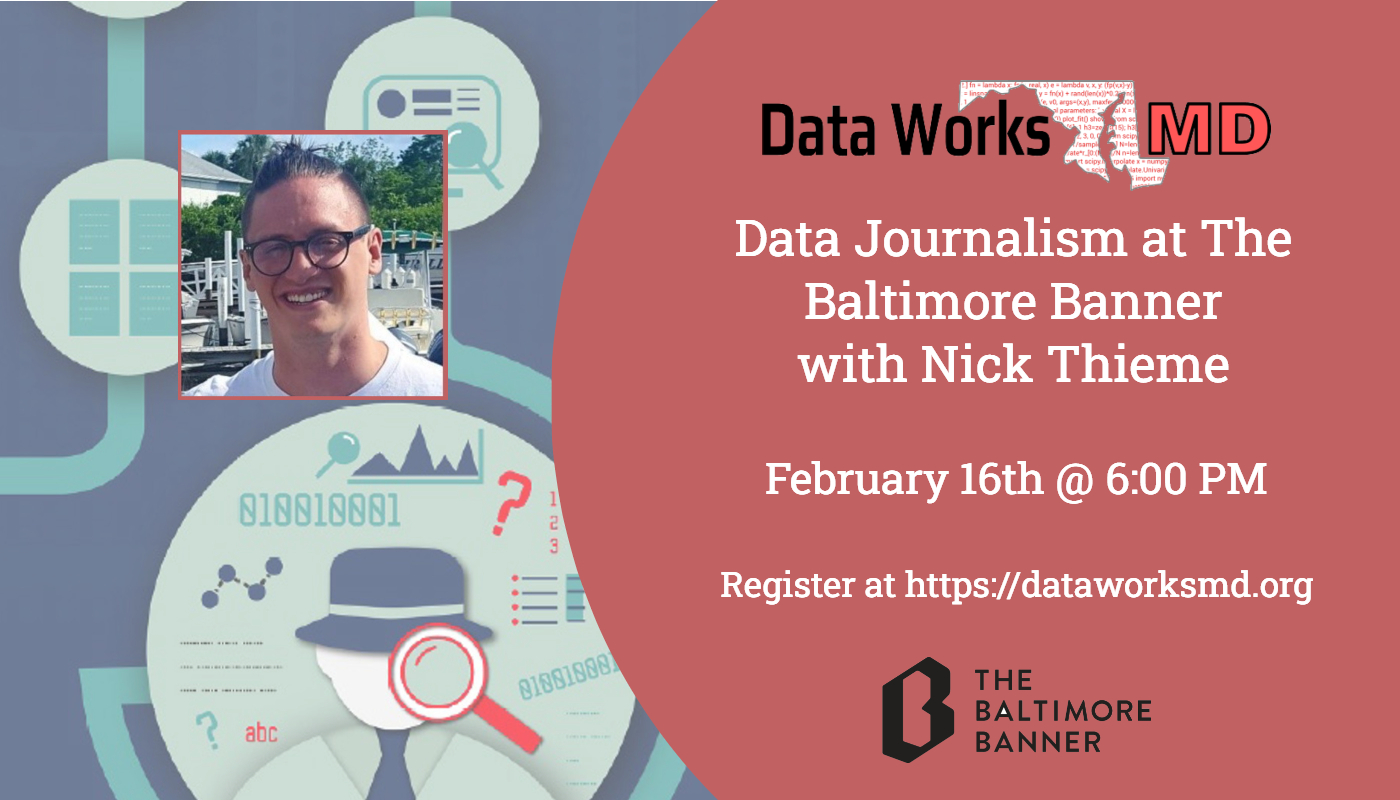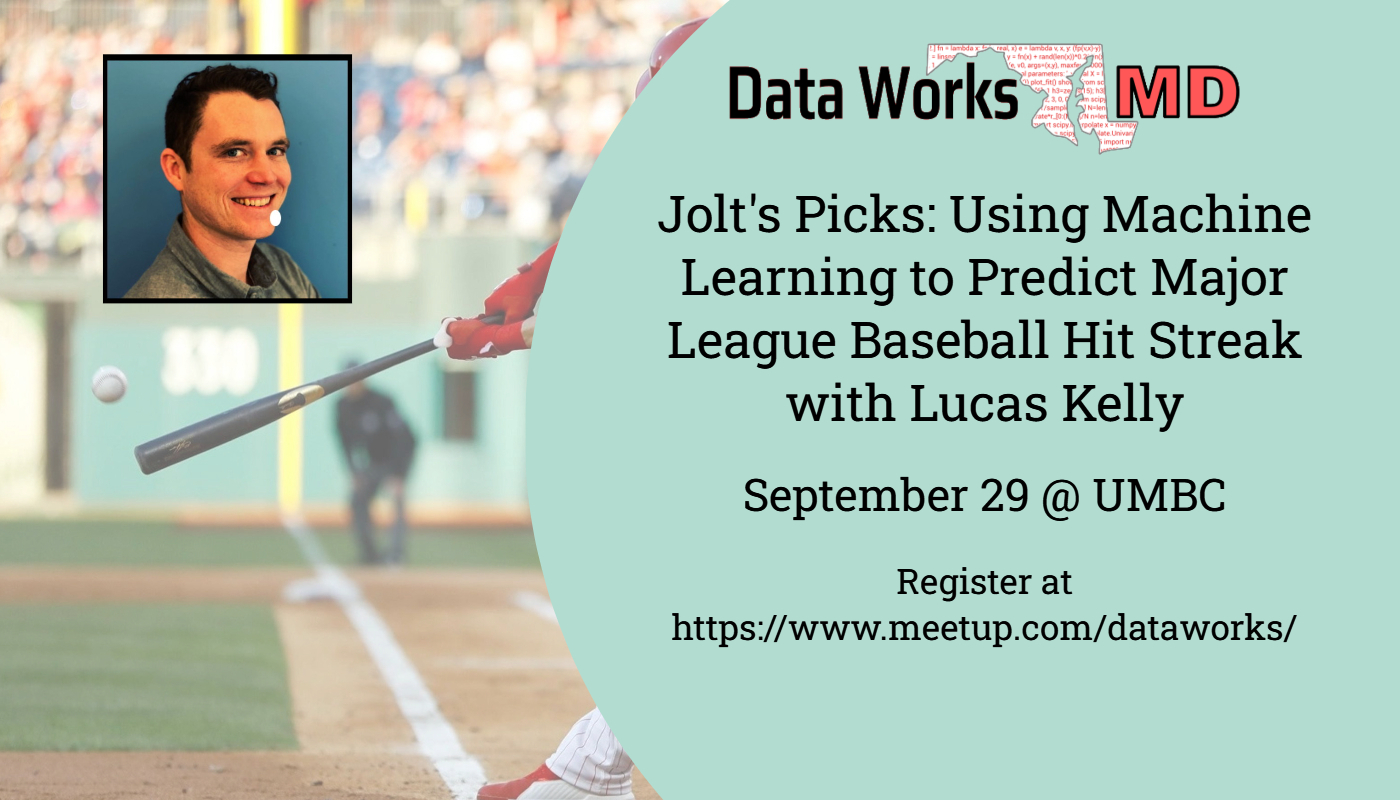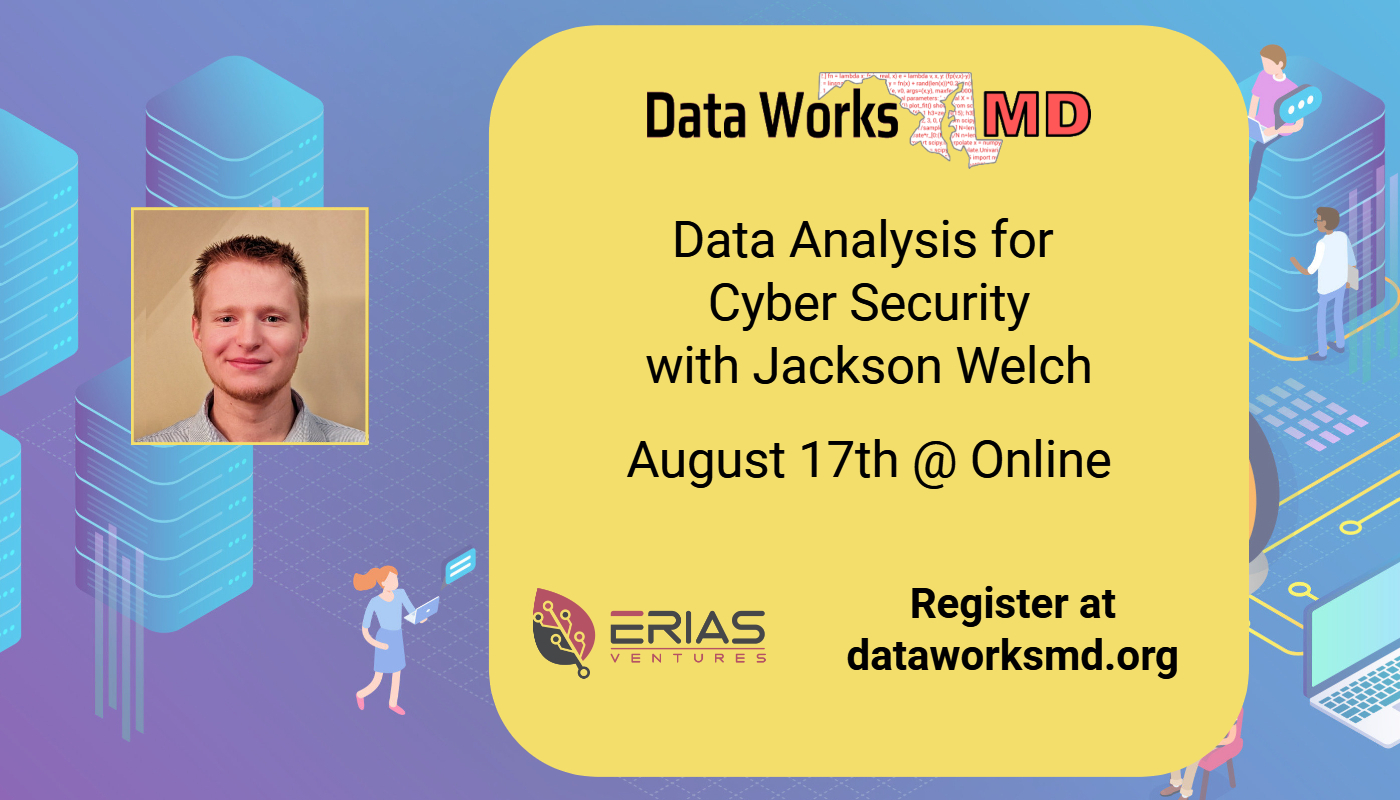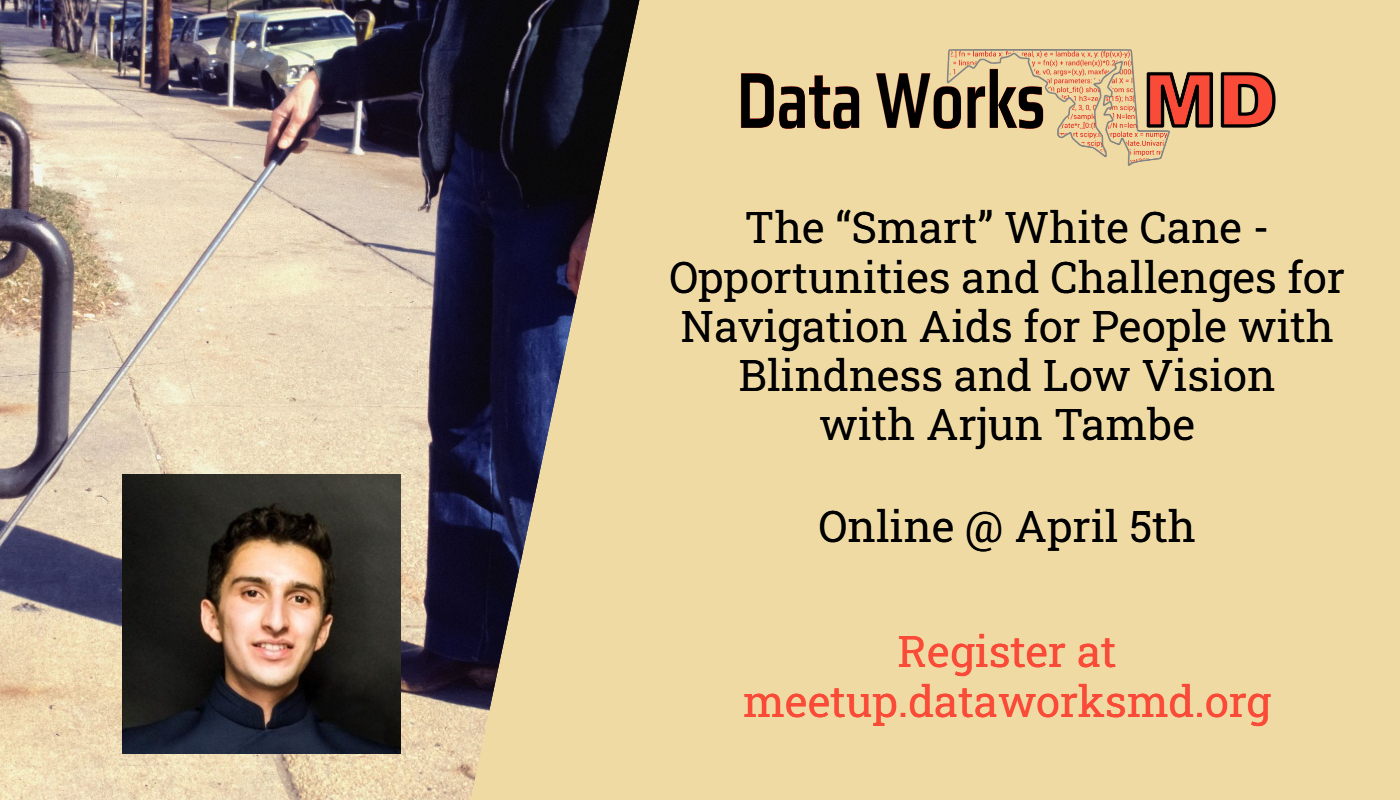
Events
Our monthly events feature presentations and discussions from local experts.

News
Our monthly newsletter features links to interesting articles, tutorials, and tools related to data science, analytics, and big data.
About Us
Data Works MD consists of professionals, students, and enthusiasts living and working in the Maryland area who are interested in topics related to data science, data analytics, data products, software engineering, machine learning, and other data engineering topics.
Upcoming
Check back for upcoming events!
Videos
Recent videos of our events can be found below. More are available at YouTube.
Data Journalism at The Baltimore Banner
Join us for our first event in 2023 as we dive into data journalism. With the increased role that data has in our lives, accurate and informative journalism now depends on the fields of design, computer science, and statistics. This requires a much deeper understanding of data and how can be used to highlight local news.
What Evils Lurk Over That Horizon?
This discussion will explore several likely cyber-related threats facing individuals, businesses, and global society at large over the next decade. In doing so, the state of cybersecurity at America's grassroots --our cities and communities-- will be examined, since not only are these the most intimate levels of government interaction with citizens, but often are fairly vulnerable targets.
Jolt's Picks: Using Machine Learning to Predict Major League Baseball Hit Streak
Can you beat baseball legend Joe DiMaggio’s 56 consecutive game hit streak? The short answer is no, you cannot. But, can you play Bet MGM’s “Beat The Streak” and win $5.6 million? Yes, you can! In this presentation FanGraphs writer and Data Scientist Lucas Kelly will present how he used machine learning in an attempt to predict a hitter most likely to get a hit in a major league baseball game each day, leveraging analytics to make more intelligent decisions. You will see how machine learning pipelines, API calls, and out-of-box thinking may help win an impossible game.
Data Analysis with Cyber Security
As large-scale networks become more complicated, new requirements for data collection can be impacted in an office environment. In this talk, we will discuss several of the tools used to perform analysis and manipulation of network data for use by analysts. We will be working with Zeek, Yet Another Flowmeter, Pandas, Docker, and scikit-learn ML models.
How to use Sentiment Analysis for Marketing
Sentiment analysis is an artificial intelligence technique that uses machine learning and natural language processing (NLP) to analyze text for polarity of opinion (positive to negative). Understanding how people are responding to specific ad campaigns through social media interaction or how well a product is being received through reviews can be a powerful tool to drive business decisions for any organization. During this discussion, I will introduce the process for establishing a corpus and creating a Sentiment Analysis model using Python's Natural Language Tool Kit (NLTK) and Tensorflow. Join us in May as we return to in-person events with a workshop on using NLP for marketing. This will be an interactive event. Attendees are encouraged to bring their laptops to follow along with the speaker.
The "Smart" White Cane - Using Augmentation for Navigation
People with blindness or impaired vision often face major challenges when navigating, especially in new environments or when traveling alone. Stanford University’s Intelligent Systems Lab recently developed a “smart” white cane that uses technology from self-driving cars to augment the traditional white cane and help users navigate safely and confidently. This talk will highlight this augmented cane, survey similar inventions, and explore key challenges and opportunities in designing navigation aids for people with blindness or impaired vision.
Newsletter
Interesting articles, tools, and tutorials. More are available at our newsletter archive.
Data Works MD March 2023 Issue
Baltimore vacant buildings, big data is dead, GPT from scratch, and more...
Data Works MD January 2023 Issue
Essential books for data scientists, selling data science, ML in Google Sheets, and more...
Data Works MD November 2022 Issue
Data contracts, state of AI report, rules of machine learning, and more ...








